Real or Fake? 8 Bizarre Hybrid Animals
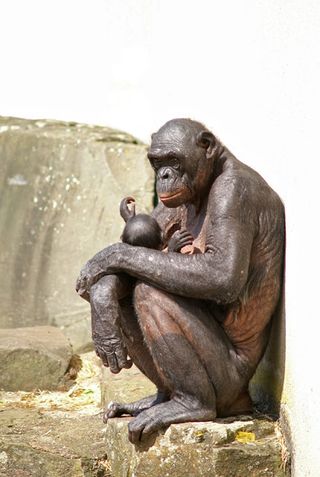
Polar-Grizzly Mix
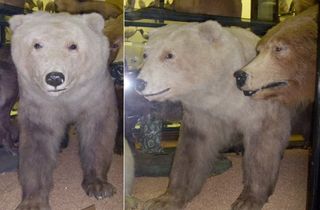
What happens when you cross a polar bear with a grizzly bear? Turns out, the babies sport a mix of features, such as partially hollow hairs. This mating story began in 2004 when a female brown bear gave birth to two brown-polar bear hybrids at the Osnabruck Zoo in Germany. The cubs were transported to another zoo to see what would happen if they were raised without the intervening of either their polar-bear or grizzly-bear parents. When scientists examined the offspring, they found the bears had long necks and visible tails similar to polar bears and small shoulder humps like brown bears. Some features showed a mix between the parents: For instance, the soles of the hybrids' feet were partly covered in hair. (Polar bears have hair-covered feet while grizzlies have hairless soles.) And the hair on the hybrids' back was hollow, but with smaller hollow regions than in hair of polar bears. The male hybrid, however, turned out to be sterile. The results were published in 2009 in the journal Der Zoologische Garten.
Humanzee
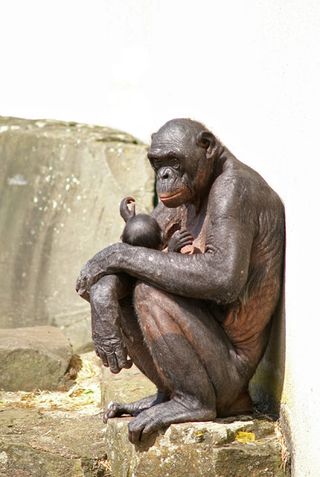
The Humanzee never came to life. But it could have. A few years ago, scientists critical of the proliferation of freaky lab experiments applied for a patent to crossbreed a human with a chimp. They were denied and would never have carried out the procedure, anyway, they said. Too bad: The little mutant could have had an easy life in Hollywood. BOTTOM LINE: FAKE
Mules and Hinnies
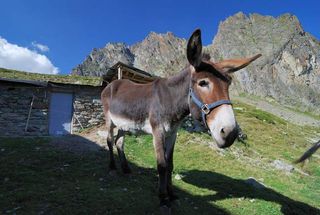
A cross between a male donkey and female horse will produce a mule. A hinny is the offspring of a stallion (male horse) and a jenny (female donkey). Mules and hinnies are usually sterile, according to the Honolulu zoo. Mules have traits from both mom and dad, with ears that are longer than a horse's but the same shape, and combination hair — with coarse mane hair and a tail more horse-like. And the animal makes a sound that's a combination of the horse's whinny and the grunting of the wind-down of a bray, according to the American Donkey and Mule Society. BOTTOM LINE: REAL
Wholphins
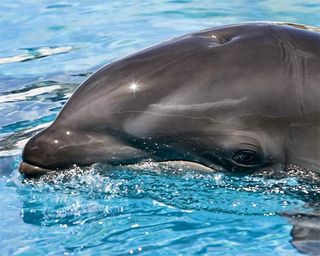
The first captive wholphin, Keikaimalu, was born in 1985. The hybrid animal, whose name means "the peaceful sea," is a cross between an Atlantic bottlenose dolphin (Tursiops truncatus) mother and a false killer whale (Pseudorca crassidens) father. While there are many instances of hybrid species, most are sterile and can't produce offspring. Keikaimalu has given birth to three calves, with one living for nine years and another surviving for just days, according to news reports. The surviving calf was born in 2005. The wholphins display characteristics that are intermediate of both parents. The coloration is similar to that of Keikaimalu's false killer whale father (black with a gray stomach), while the rostrum has a blunted bottle shape and 66 teeth. Bottlenose dolphins have 88 teeth, and false killer whales have 88 teeth, according to Sea Life Park in Hawaii, where the wholphins reside. BOTTOM LINE: REAL
Part-Dog, Part-Human?
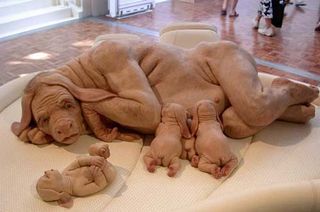
News of a dog-human hybrid circulated the Web in 2009, along with a photo of what was supposedly a part-dog-part-woman nursing the bizarre offspring. The news story suggested Israeli scientists had crossed a Labrador retriever with a human, and apparently, out popped the trans-species litter, er, babies. While the cross between such distant species is considered genetically impossible, the story sparked some debate over the consequences of genetic manipulation. The dog-human photo wasn't doctored, and was actually of a sculpture by artist Patricia Piccinini, from her 2003 exhibition "We Are Family." BOTTOM LINE: FAKE
Humpless Llama
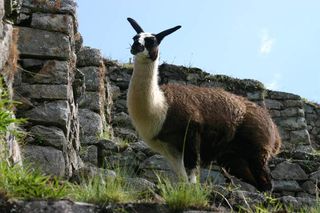
A humpless camel was born in 1998 at the Camel Reproduction Center in Dubai. The odd-looking camel, now referred to as a "cama," was the cross between a male camel and a female llama. Because of the big difference in size between the two mates, the interbreeding usually involves artificial insemination. Like its mother, the little one (dubbed Rama) had no hump and cloven hooves, according to news reports. Its short ears and long tail came from dad. BOTTOM LINE: REAL
Hybrid Salamanders
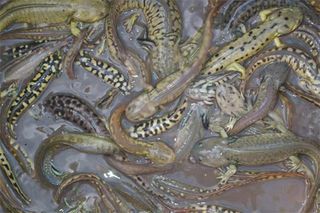
In the middle of the 20th century, local fishermen who relied on baby salamanders as bait introduced the barred tiger salamander to California water bodies. These newbies came into contact with the native California tiger salamanders, and over time the two species mated. "To give you a sense of the difference between these two species, they are about as closely related as humans and chimpanzees," said Ben Fitzpatrick of the University of Tennessee at Knoxville, in a press statement. The resulting hybrid offspring were a surprise, because they not only survived but thrived. Research has mostly shown that animal hybrids aren't as "fit" as other animals. The results were published in 2007 in the journal Proceedings of the National Academy of Sciences. BOTTOM LINE: REAL
Sign up for the Live Science daily newsletter now
Get the world’s most fascinating discoveries delivered straight to your inbox.
Ligers and Tigons
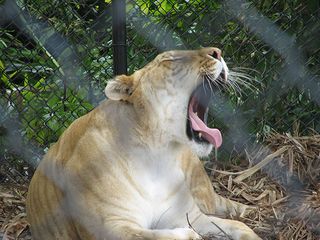
Lions and tigers don't typically brush shoulders in the wild since they live in different areas. But in captivity, that's another story. The cats are closely related and so can interbreed. A liger is the result of breeding a male lion to a tigress, while a tigon results from a male tiger mating with a lioness. Since lions and tigers do not exist in the same areas, this is not something that happens in the wild. These feline hybrids suffer from many birth defects and usually die young, according to Big Cat Rescue, a non-profit educational sanctuary in Tampa, Fla. And since ligers are usually larger than either parent, the heft puts the tigress at great risk in carrying the young and may require C-section deliveries, according to the organization. BOTTOM LINE: REAL
Most Popular


